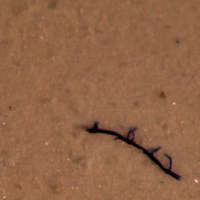Occurrence of potential plastic microfibers in mussels and anchovies sold for human consumption: Preliminary results

Submitted: 9 July 2021
Accepted: 8 November 2021
Published: 22 December 2021
Accepted: 8 November 2021
Abstract Views: 833
PDF: 459
HTML: 19
HTML: 19
Publisher's note
All claims expressed in this article are solely those of the authors and do not necessarily represent those of their affiliated organizations, or those of the publisher, the editors and the reviewers. Any product that may be evaluated in this article or claim that may be made by its manufacturer is not guaranteed or endorsed by the publisher.
All claims expressed in this article are solely those of the authors and do not necessarily represent those of their affiliated organizations, or those of the publisher, the editors and the reviewers. Any product that may be evaluated in this article or claim that may be made by its manufacturer is not guaranteed or endorsed by the publisher.
Similar Articles
- Serena Santonicola, Michela Volgare, Emilia Di Pace, Raffaelina Mercogliano, Mariacristina Cocca, Gennaro Raimo, Giampaolo Colavita, Research and characterization of fibrous microplastics and natural microfibers in pelagic and benthic fish species of commercial interest , Italian Journal of Food Safety: Vol. 12 No. 1 (2023)
- Alessia Armellini, Gianluigi Ferri, Carlotta Lauteri, Antonio De Camillis, Luca Pennisi, Microplastics in Sepia officinalis caught on the central Adriatic coast: preliminary results , Italian Journal of Food Safety: Vol. 12 No. 2 (2023)
You may also start an advanced similarity search for this article.

 https://doi.org/10.4081/ijfs.2021.9962
https://doi.org/10.4081/ijfs.2021.9962



